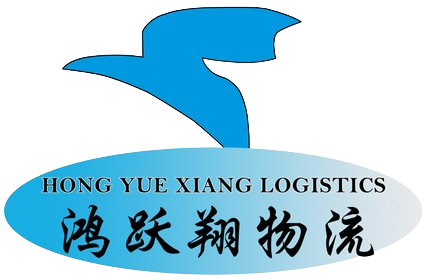News
Cross-border E-commerce Logistics: Facilitating International Online Sales
The Critical Role of Cross-Border E-commerce Logistics
Enabling Global Market Access for Online Retailers
For online retailers wanting to break into foreign markets, cross border e commerce logistics matters a lot. When they get good at managing their shipping and delivery systems, businesses open doors to customers all around the world while tapping into new sales channels. Research indicates that getting logistics right makes all the difference in e commerce operations. Clean supply chains mean happier customers who tend to come back again and again. Offering different shipping methods helps stores meet what people want from their orders, which gives them an advantage against competitors selling similar products internationally. Retailers who invest smartly in their logistics infrastructure find it much easier to handle the complexities of international trade and keep growing their business no matter where they operate.
Bridging Gaps in International Supply Chains
Cross border logistics plays a big role in fixing problems that plague international supply chains. The right logistics solutions help cut down on wasted time and money while getting products from point A to B faster than before. When retailers plan their logistics strategies properly, they avoid those frustrating inventory problems that cause empty shelves or overstock situations. Goods keep moving steadily between countries, so stores don't run out when customers need them most. Working with Logistics Service Providers gives companies extra breathing room in their operations. These third party experts bring flexibility to supply chains, which means businesses can pivot quickly when markets shift unexpectedly. For instance, during last year's shipping crisis many companies relied heavily on LSP networks to keep operations running. All these improvements mean better efficiency overall, shorter wait times for deliveries, and stronger supply chains capable of handling disruptions without breaking down completely. At the end of the day, this translates to happier customers worldwide who receive what they ordered on time.
Let's look at what happens when exporters start using overseas warehouses. These storage locations have completely changed how products move across borders. They allow companies to ship large quantities all at once instead of sending small batches repeatedly, which cuts down on transportation expenses while still getting items to customers around the world faster. Take a closer look inside these warehouse operations and we find technology playing a big role. From automated inventory systems to real time tracking solutions, modern tech makes everything run smoother. The result? Faster turnaround times for deliveries and happier customers who receive their orders without unnecessary delays. Businesses that adopt this approach often see improvements in customer satisfaction ratings too.
Essential Components of Successful International Logistics Operations
Optimizing Transportation Networks for Cross-Border Efficiency
Getting goods across borders efficiently requires smart planning of transport networks to balance fast deliveries against costs. The best systems combine different transport options - planes for urgent items, ships for bulk cargo, and trucks for last mile delivery - creating a smooth flow from warehouse to customer. Real world data indicates that when companies optimize their shipping paths, they often cut down on travel time quite substantially, maybe around 20% or even better in some cases. Working closely with transport providers while integrating modern tracking technologies makes a big difference too. Logistics managers can now monitor where packages are at any given moment and allocate staff and equipment where needed most, which helps streamline operations across the board.
Customs Compliance and Regulatory Navigation
Getting familiar with customs rules helps prevent those frustrating delays and costly fines when moving goods across borders. For anyone dealing with international shipping, following these regulations isn't just important it's absolutely necessary. Industry reports show that wrong paperwork alone can hold things up for around 20% longer than expected. This explains why many businesses turn to customs brokers who know their way around the maze of requirements. These professionals handle everything from figuring out duty rates to making sure paperwork matches exactly what's required. They check documents against current standards so nothing gets stuck at the border. Working with them means fewer headaches and smoother operations when transporting goods internationally.
Warehousing Solutions: From FBA to Overseas Hubs
Warehousing solutions like Fulfillment by Amazon (FBA) really make a difference when it comes to faster deliveries and happier customers. Retailers can keep their stock in these smart distribution centers spread across different regions, which cuts down on how long packages take to reach shoppers. Looking at the global scene, companies that establish warehouses abroad often see big savings on shipping costs while getting products to distant customers quicker than competitors who don't have this setup. Warehouse Management Systems (WMS) take things even further by making it easier to track what's in stock and handle orders efficiently. Most small business owners I've spoken to say these systems save them hours every week. For anyone trying to compete internationally, having good warehouse management isn't just helpful anymore—it's practically essential for staying ahead in today's fast paced market environment.
Technology's Impact on Streamlining Global Deliveries
AI-Driven Route Optimization and Demand Forecasting
AI tech is making waves across the world of shipping and delivery services these days. When companies let AI look through all those massive piles of data they collect daily, something interesting happens - delivery routes get smarter. Some research shows this smart routing can cut down on wasted trips by as much as 30 percent in certain cases. The savings from better routes mean less gas burned and faster deliveries overall, which gives shippers a real advantage when customers compare options. Another big plus comes from AI predicting what products people will want before they even ask for them. This kind of forward thinking lets warehouses stock up on popular items ahead of time instead of scrambling last minute. Many logistics firms now run machine learning models behind the scenes to keep tabs on everything from traffic patterns to weather forecasts. These systems aren't just saving money either; they're actually improving customer satisfaction rates too. For businesses trying to stay ahead in today's fast paced market, getting comfortable with AI powered logistics isn't optional anymore.
Real-Time Tracking Systems for Enhanced Visibility
Tracking systems that work in real time have completely changed how businesses interact with customers because they give everyone a clear picture of where shipments are at any moment. Studies show around 70% of shoppers now want to track packages as they move through the delivery process, something that makes the whole shopping experience much better for them. These systems aren't just about keeping people updated either. When companies provide regular status reports, there's less chance of packages getting lost or arguments breaking out over missing items. Transparent tracking builds customer confidence too, making shoppers feel good knowing exactly what's happening to their orders. Better tracking tech doesn't just cut down on problems though. It actually makes it easier for sellers and buyers to talk to each other, creating smoother transactions all around the board.
Automated Customs Clearance Processes
Bringing automation into customs clearance has revolutionized how companies handle international shipping operations. Automated systems cut down waiting periods at borders and reduce mistakes when entering shipment details something that often holds things up for days. The numbers back this up too many firms report getting their goods through customs about half as fast once they switch from paper-based processes to digital ones. These electronic customs platforms do all the necessary checks for regulations compliance but still keep things moving quickly. What really matters for importers and exporters is being able to deliver products on time without unexpected holdups. That's why so many logistics managers are turning to these automated solutions to stay competitive in today's fast paced global trade environment.
Navigating Challenges and Future Market Directions
Addressing Cross-Border Regulatory Complexities
Doing business online across borders brings all sorts of headaches, mainly because every country has its own rules and regulations. The whole process gets really complicated when trying to move goods between places with different legal requirements. Industry insiders say that keeping up with how these rules change over time is absolutely necessary if companies want to avoid problems down the road. When paperwork goes wrong or there's some sort of compliance issue, shipments get stuck at customs or face fines that eat into profits. That's why smart businesses invest time in training their staff about what needs to happen and buy software that helps track all these requirements. Spending money on good compliance systems pays off in the long run by making things run better day to day and building a supply chain that actually works when moving products internationally without constant hiccups.
Sustainability in Global Logistics Networks
Green practices are now front of mind for many logistics companies as customers start to favor businesses that care about the environment. Research indicates that when companies implement sustainable logistics strategies, they can cut down on carbon emissions quite substantially, maybe around 30% in some cases. The challenge for logistics providers is finding creative ways to bring sustainability into their operations while still keeping things running smoothly. Some approaches include switching to vehicles that use less fuel, cutting back on packaging materials, and planning better delivery routes to minimize fuel consumption. Companies that take these steps tend to meet international environmental guidelines and at the same time build a stronger reputation among shoppers who really care about protecting our planet.
Projected Market Growth and Emerging Opportunities
Global e-commerce logistics markets are looking at some serious expansion over the next few years. Industry forecasts suggest around 10.5% compound annual growth between 2023 and 2030. For companies willing to jump on board this trend, there's real money to be made here. The Asia-Pacific region stands out as especially attractive right now, along with parts of Latin America where more people are getting online access every day. Mobile shopping is taking off big time in these areas too. Businesses wanting to grab a piece of this action need to start thinking about tech upgrades sooner rather than later. Investing in smart logistics solutions isn't just good practice anymore it's becoming essential if companies want to keep up with competitors who already have their finger on the pulse of digital transformation.
Recommended Products
Hot News
-
A Vital Freight Mode Connecting The World
2024-01-16
-
The Continued Development Of Our Freight Shipping Company
2024-01-16
-
The Importance Of A Trucking Company
2024-01-16

 EN
EN
 AR
AR
 FR
FR
 DE
DE
 PT
PT
 RU
RU
 ES
ES
 TR
TR
